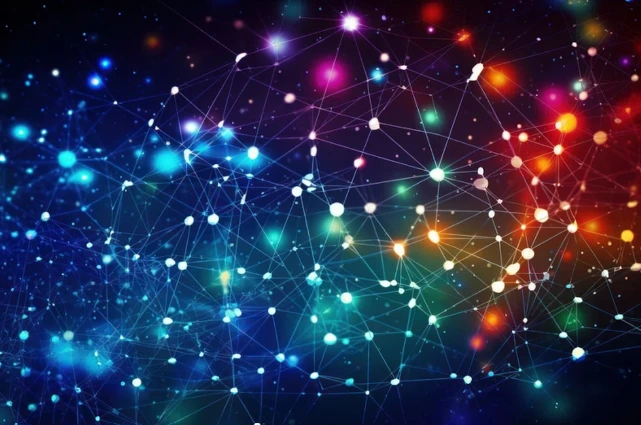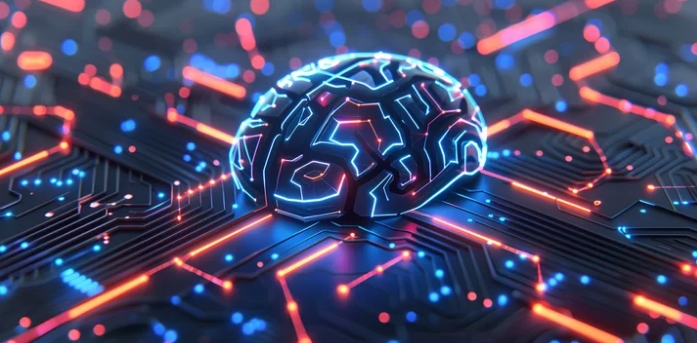Artificial Neural Networks - Structure, Function, and Applications
Understanding Synthetic Neural Networks
When you read this article, which organ in your body is processing the information? It’s the brain, of course! But do you know how the brain operates? It has neurons or nerve cells that are the primary units of both the brain and the nervous system. These neurons receive sensory input from the external environment, process it, and then provide output, which might serve as the input to the next neuron. Each of these neurons connects to other neurons in complex networks at synapses. Now, are you wondering how this relates to Synthetic Neural Networks? Synthetic Neural Networks are modeled after the neurons in the human brain. Let’s take a look into what they are and how they learn information.Structure and Function of Synthetic Neural Networks
Synthetic Neural Networks consist of artificial neurons known as units. These units are arranged in a series of layers that together form the entire Synthetic Neural Network in a system. A layer can have a few units or millions, depending on how complex the neural network needs to be to learn hidden patterns in the dataset. Typically, a Synthetic Neural Network has an input layer, an output layer, and hidden layers. The input layer receives data from the outside world for the neural network to analyze or learn about. This data then passes through one or multiple hidden layers, which transform the input into data valuable for the output layer. Finally, the output layer provides an output in response to the input data provided.
In most neural networks, units are interconnected from one layer to another. Each of these connections has weights that determine the influence of one unit on another. As data transfers from one unit to another, the neural network learns more about the data, eventually resulting in an output from the output layer.

Biological Inspiration
The structures and operations of human neurons serve as the basis for synthetic neural networks. These are also known as neural networks or neural nets. The input layer of a synthetic neural network is the first layer, receiving input from external sources and releasing it to the hidden layer, the second layer. In the hidden layer, each neuron receives input from the previous layer neurons, computes the weighted sum, and sends it to the neurons in the next layer. These connections are weighted, meaning the effects of the inputs from the previous layer are optimized more or less by assigning different weights to each input. These weights are adjusted during training to optimize model performance.Artificial Neurons vs. Biological Neurons
The concept of synthetic neural networks comes from biological neurons found in animal brains, so they share many similarities in structure and function.
Structural Comparison
Structure - The structure of synthetic neural networks is inspired by biological neurons. A biological neuron has a cell body or soma to process impulses, dendrites to receive them, and an axon to transfer them to other neurons. The input nodes of synthetic neural networks receive input signals, the hidden layer nodes process these signals, and the output layer nodes compute the final output by processing the hidden layer’s results using activation functions.Synapses - Synapses are the links between biological neurons that enable the transmission of impulses from dendrites to the cell body. In synthetic neurons, synapses are the weights that join nodes from one layer to the next. The strength of these links is determined by the weight value.
Learning Mechanisms
Learning - In biological neurons, learning occurs in the cell body or soma, which has a nucleus that processes impulses. If the impulses are strong enough to reach the threshold, an action potential is produced and travels through the axons. This is possible due to synaptic plasticity, representing the ability of synapses to become stronger or weaker over time in reaction to changes in their activity. In synthetic neural networks, backpropagation is a technique used for learning. It adjusts the weights between nodes according to the error or differences between predicted and actual outcomes.Activation - In biological neurons, activation is the firing rate of the neuron, which happens when the impulses are strong enough to reach the threshold. In synthetic neural networks, a mathematical function known as an activation function maps the input to the output and executes activations.

How Do Synthetic Neural Networks Learn?
Synthetic neural networks are trained using a training set. For example, suppose you want to teach a synthetic neural network to recognize a cat. The network is shown thousands of different images of cats to learn to identify a cat. Once the network has been trained enough using images of cats, you need to check if it can correctly identify cat images. This is done by having the network classify images, deciding whether they are cat images or not. The output obtained by the network is corroborated by a human-provided description of whether the image is a cat image. If the network identifies incorrectly, backpropagation is used to adjust what it has learned during training. Backpropagation fine-tunes the weights of the connections in the network's units based on the error rate obtained. This process continues until the network can correctly recognize a cat in an image with minimal error rates.
Types of Synthetic Neural Networks
Feedforward Neural Network - The feedforward neural network is one of the most basic synthetic neural networks. In this network, the data or input provided travels in a single direction. It enters the network through the input layer and exits through the output layer, with hidden layers possibly existing. The feedforward neural network has a front-propagated wave only and usually does not have backpropagation.
Convolutional Neural Network - A Convolutional neural network has similarities to the feedforward neural network, where the connections between units have weights that determine the influence of one unit on another. However, a CNN has one or more convolutional layers that use a convolution operation on the input and then pass the result obtained to the next layer. CNNs are used in speech and image processing, particularly in computer vision.
Modular Neural Network - A Modular Neural Network contains a collection of different neural networks that work independently towards obtaining the output with no interaction between them. Each different network performs a different sub-task by obtaining unique inputs. The advantage of this modular neural network is that it breaks down a large and complex computational process into smaller components, decreasing complexity while still obtaining the required output.
Radial Basis Function Neural Network - Radial basis functions consider the distance of a point concerning the center. RBF networks have two layers. In the first layer, the input is mapped into all the radial basis functions in the hidden layer, and then the output layer computes the output in the next step. RBF networks are used to model data representing underlying trends or functions.
Recurrent Neural Network - The Recurrent Neural Network saves the output of a layer and feeds this output back to the input to better predict the outcome of the layer. The first layer in the RNN is similar to the feedforward neural network, and the recurrent network starts once the output of the first layer is computed. Each unit remembers some information from the previous step so that it can act as a memory cell in performing computations.

Applications of Synthetic Neural Networks
Social Media - Synthetic Neural Networks are used extensively in social media. For example, the 'People you may know' feature on Facebook suggests people you might know in real life so that you can send them friend requests. This effect is achieved by using Synthetic Neural Networks that analyze your profile, interests, current friends, and other factors. Another application is facial recognition, done by finding around 100 reference points on a person’s face and matching them with those in the database using convolutional neural networks.
Marketing and Sales - When you log onto e-commerce sites like Amazon and Flipkart, they recommend products based on your previous browsing history. Similarly, if you love pasta, Zomato, Swiggy, etc., will show restaurant recommendations based on your tastes and order history. This personalized marketing uses Synthetic Neural Networks to identify customer preferences and tailor marketing campaigns accordingly.
Healthcare - Synthetic Neural Networks are used in oncology to train algorithms to identify cancerous tissue at the microscopic level with the same accuracy as trained physicians. Various rare diseases manifest in physical characteristics and can be identified in their early stages using facial analysis on patient photos. Full-scale implementation of Synthetic Neural Networks in healthcare can enhance the diagnostic abilities of medical experts and improve the quality of medical care worldwide.
Personal Assistants - Siri, Alexa, Cortana, etc., are personal assistants that use speech recognition and Natural Language Processing (NLP) to interact with users and formulate responses. NLP uses synthetic neural networks to manage language syntax, semantics, correct speech, and conversation context.
How to Train Neural Networks?
Training a neural network involves teaching it to perform a task by processing several large sets of labeled or unlabeled data. These examples help the network process unknown inputs more accurately.
Supervised Learning - In supervised learning, data scientists provide synthetic neural networks with labeled datasets that contain the correct answers. For instance, a deep learning network trained in facial recognition processes hundreds of thousands of images of human faces with various terms describing each image. The network builds knowledge from these datasets and starts making guesses about new images it has never processed before.
Unsupervised Learning - In unsupervised learning, the neural network is given unlabeled data and must find patterns and relationships on its own. This approach is useful for tasks like clustering, where the goal is to group similar data points together without predefined categories. Unsupervised learning allows neural networks to discover hidden structures in data that humans may not have recognized.
Reinforcement Learning - Reinforcement learning is a type of machine learning where an agent learns to make decisions by interacting with an environment. In the context of neural networks, this involves training the network to maximize a reward signal. This approach is particularly useful in robotics, game playing, and autonomous systems where the goal is to learn optimal behavior through trial and error.
Transfer Learning - Transfer learning is a technique where a neural network trained on one task is repurposed for a related task. This approach can significantly reduce the amount of data and time required to train a new model. For example, a network trained on general image recognition can be fine-tuned for a specific task like identifying plant species with relatively little additional training.

Challenges and Future Directions in Synthetic Neural Networks
While synthetic neural networks have achieved remarkable success in many areas, they still face several challenges. Addressing these challenges is crucial for the continued advancement of the field.Interpretability and Explainability
One of the main criticisms of deep neural networks is their "black box" nature. It's often difficult to understand why a network made a particular decision. This lack of interpretability can be problematic in high-stakes applications like healthcare or finance.Researchers are working on various techniques to make neural networks more interpretable:
Robustness and Adversarial Attacks
Neural networks can be vulnerable to adversarial attacks, where small, carefully crafted perturbations to the input can cause the model to make incorrect predictions with high confidence. This raises concerns about the reliability and security of neural network-based systems.Ongoing research in this area includes:
Energy Efficiency and Computational Resources
Training large neural networks requires significant computational resources and energy. This not only has environmental implications but also limits the accessibility of advanced AI techniques to those with access to substantial computing power.Efforts to address this challenge include:
Continual Learning
Most current neural network models are trained on a fixed dataset and struggle to adapt to new information without retraining on the entire dataset. This is in contrast to biological neural networks, which can continually learn and adapt.Research in continual learning aims to develop models that can:

Advanced Concepts in Synthetic Neural Networks
Hardware Architecture for Neural Networks
Two types of methods are used to implement hardware for neural networks:Learning Techniques
Neural networks learn by adjusting their weights and biases iteratively to yield the desired output. These are called free parameters, and learning occurs through training using a defined set of rules known as the learning algorithm. Some common training algorithms include:Pattern Recognition
Pattern recognition is a critical application of neural networks, involving the observation of the environment to distinguish patterns of interest from their background. It includes tasks like:
Real-World Applications of Neural Networks
Computer Vision
Neural networks enable computers to extract information and insights from images and videos, similar to human vision. Applications include:Speech Recognition
Neural networks analyze human speech despite variations in speech patterns, pitch, tone, language, and accent. Applications include:Natural Language Processing
Neural networks help computers gather insights and meaning from text data and documents. Applications include:Looking Ahead: The Next Frontier
As we look to the future, the integration of synthetic neural networks into everyday life is likely to deepen. Industries such as finance, transportation, and education are already beginning to harness the power of these networks to optimize operations and enhance decision-making processes. The rise of autonomous vehicles, smart cities, and intelligent tutoring systems exemplifies how these technologies can transform our world.Synthetic neural networks have revolutionized numerous fields by mimicking the human brain's ability to process complex data. From social media to healthcare, these networks continue to advance, offering new possibilities for innovation and efficiency. As technology evolves, the potential applications of synthetic neural networks are limitless, promising to reshape industries and improve the quality of life.
Find more about AI and ML here: ML AI News.
Machine Learning Artificial Intelligence News
https://machinelearningartificialintelligence.com
AI & ML



Sign Up for Our Newsletter